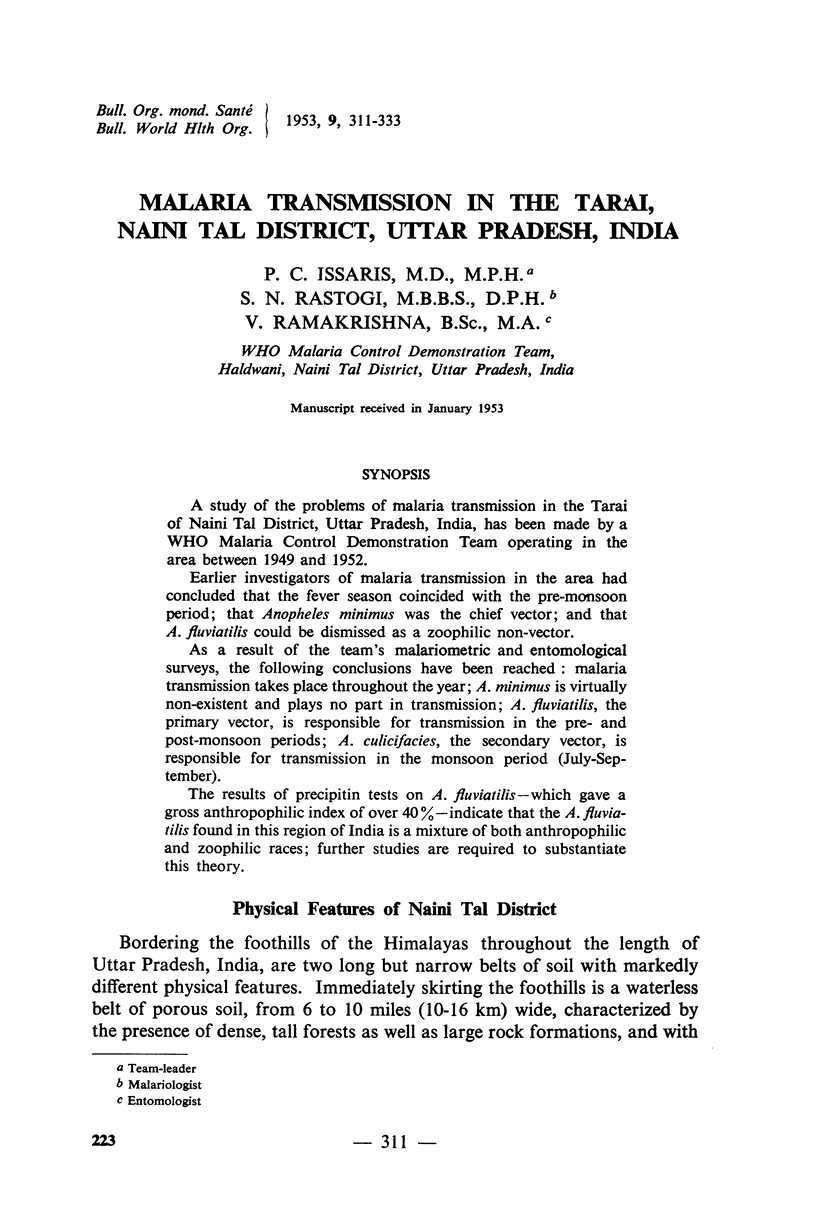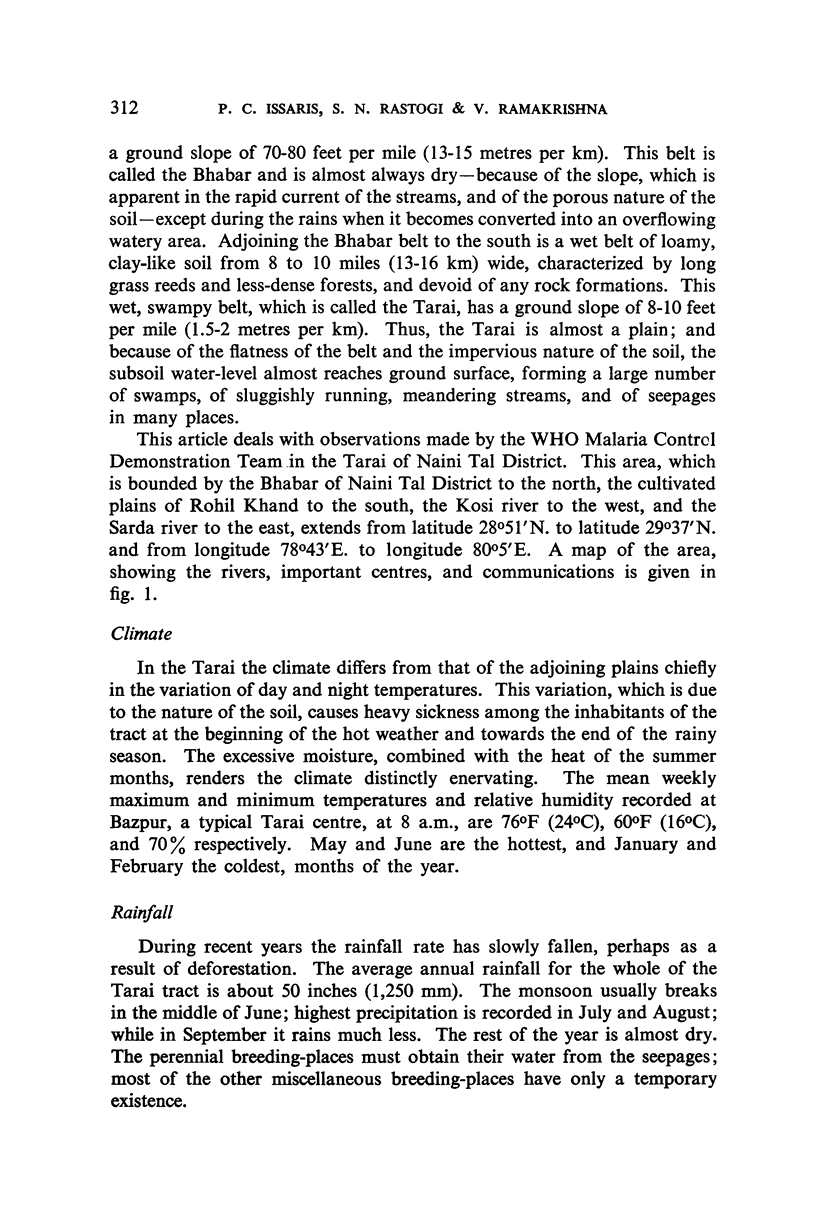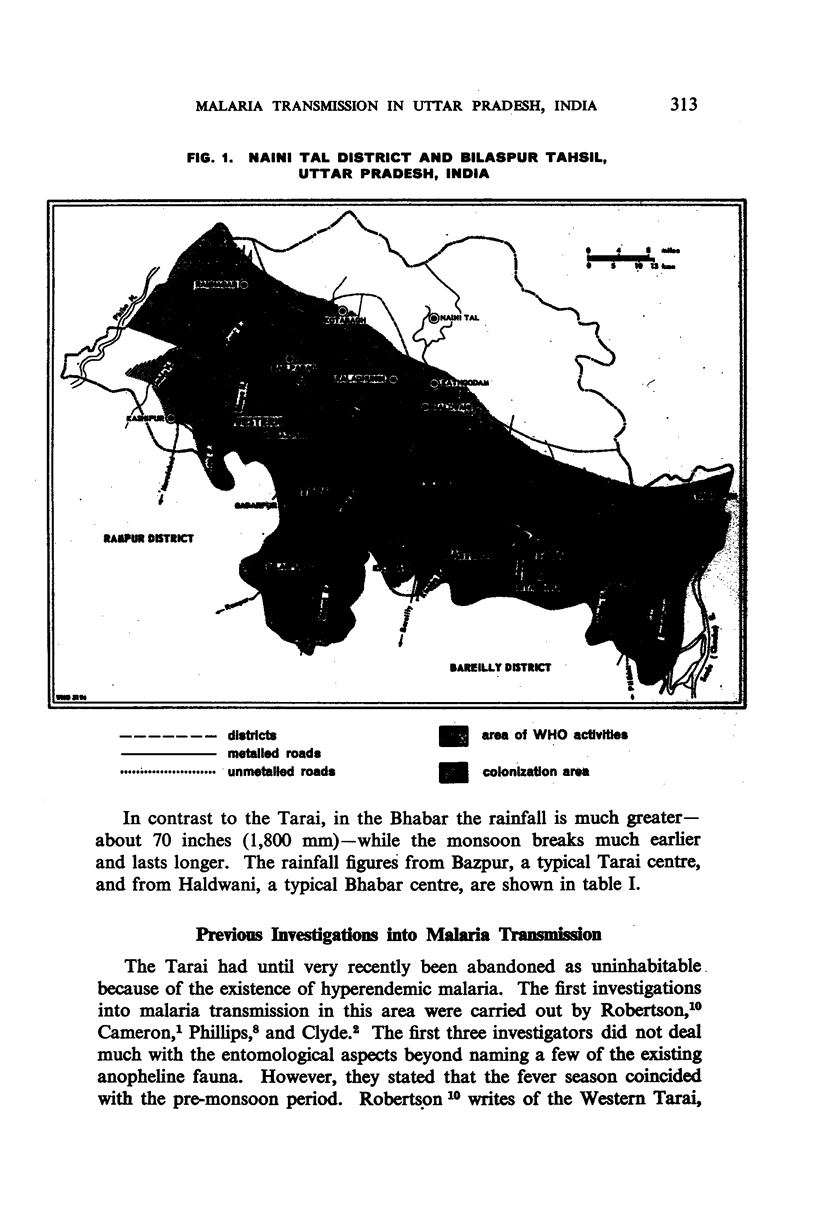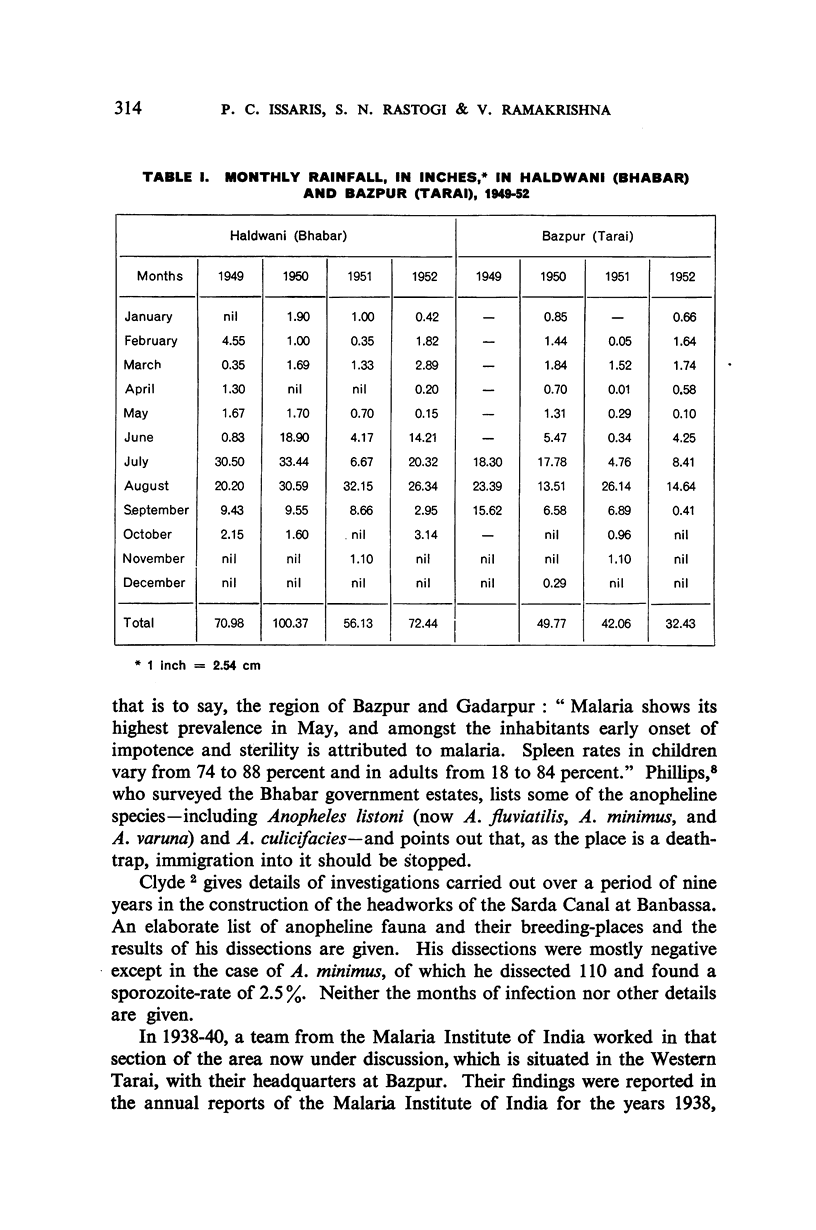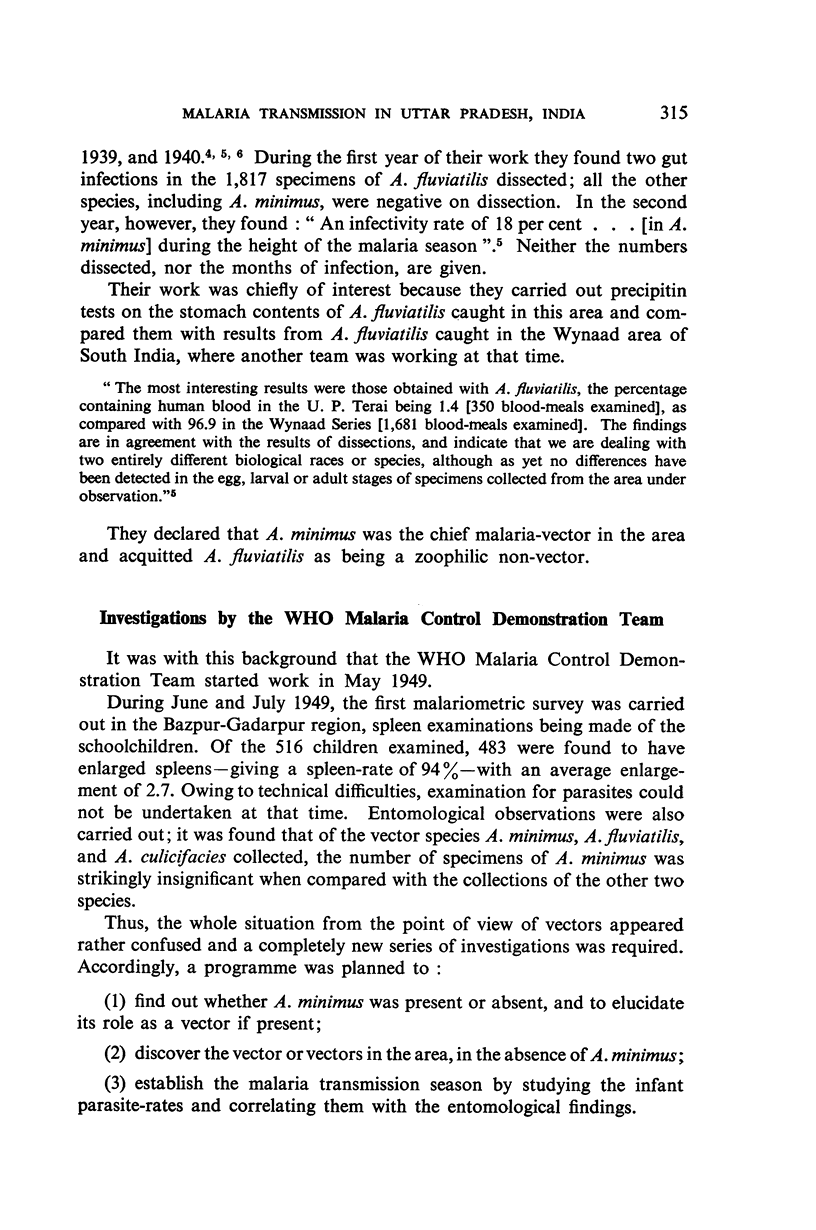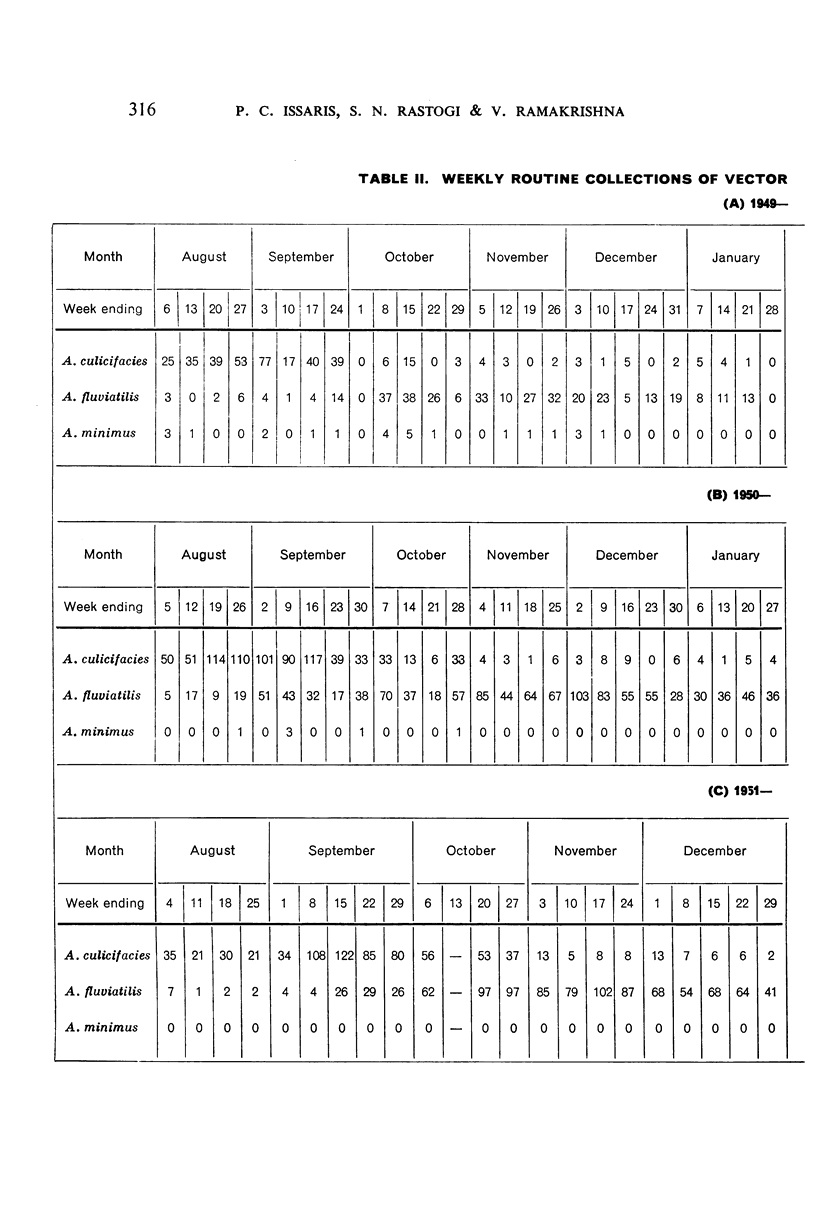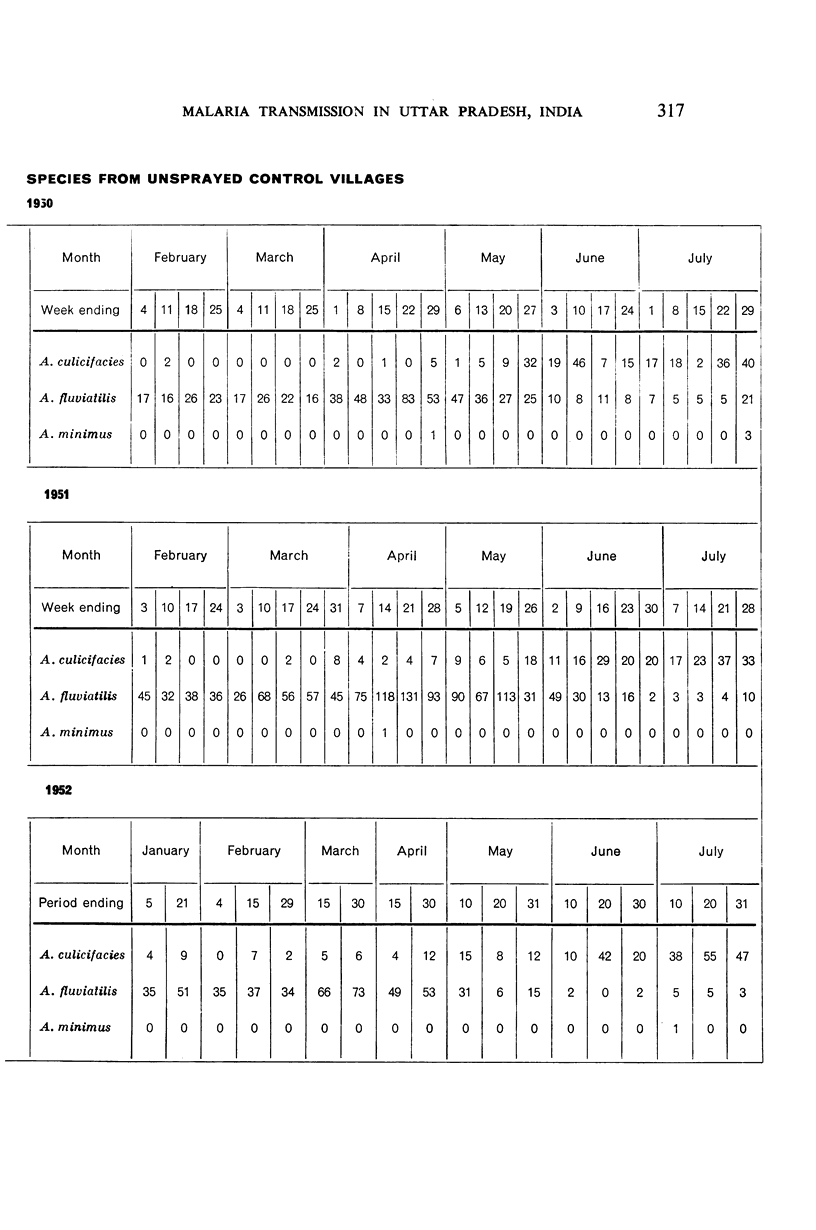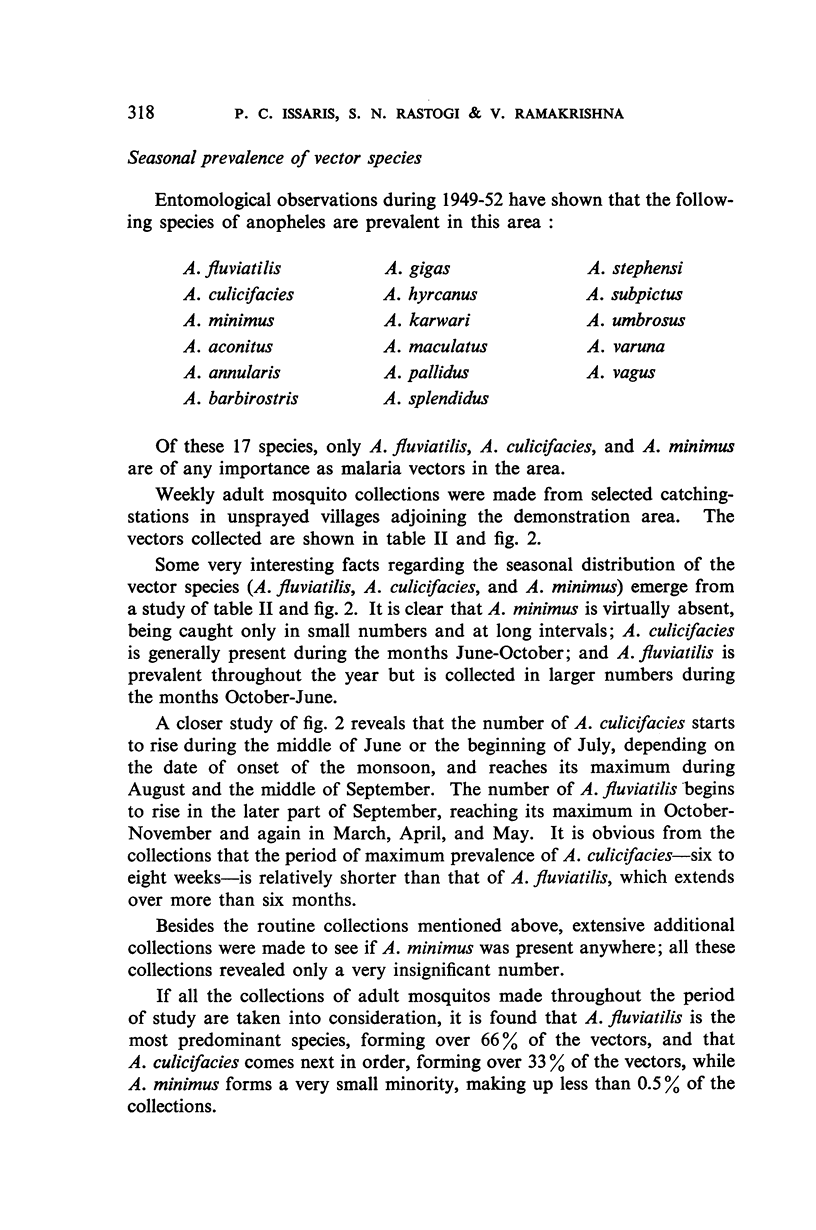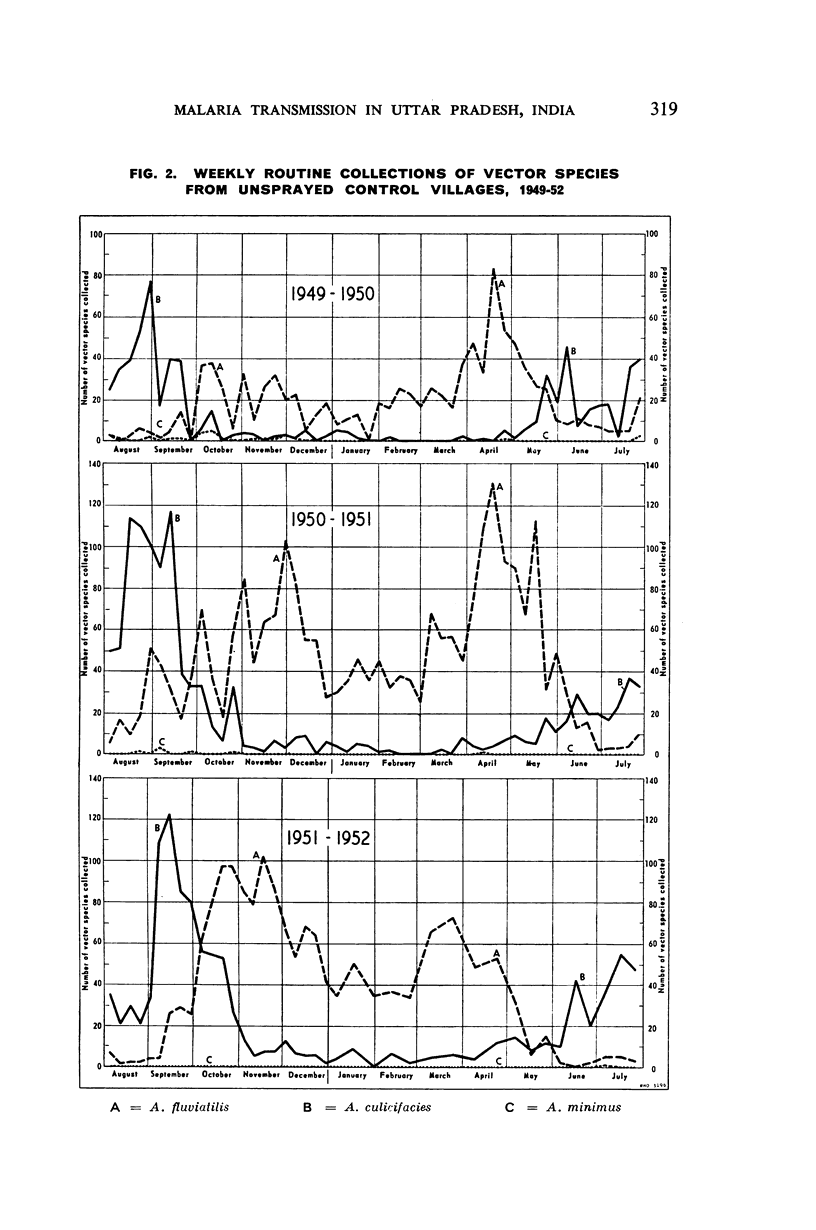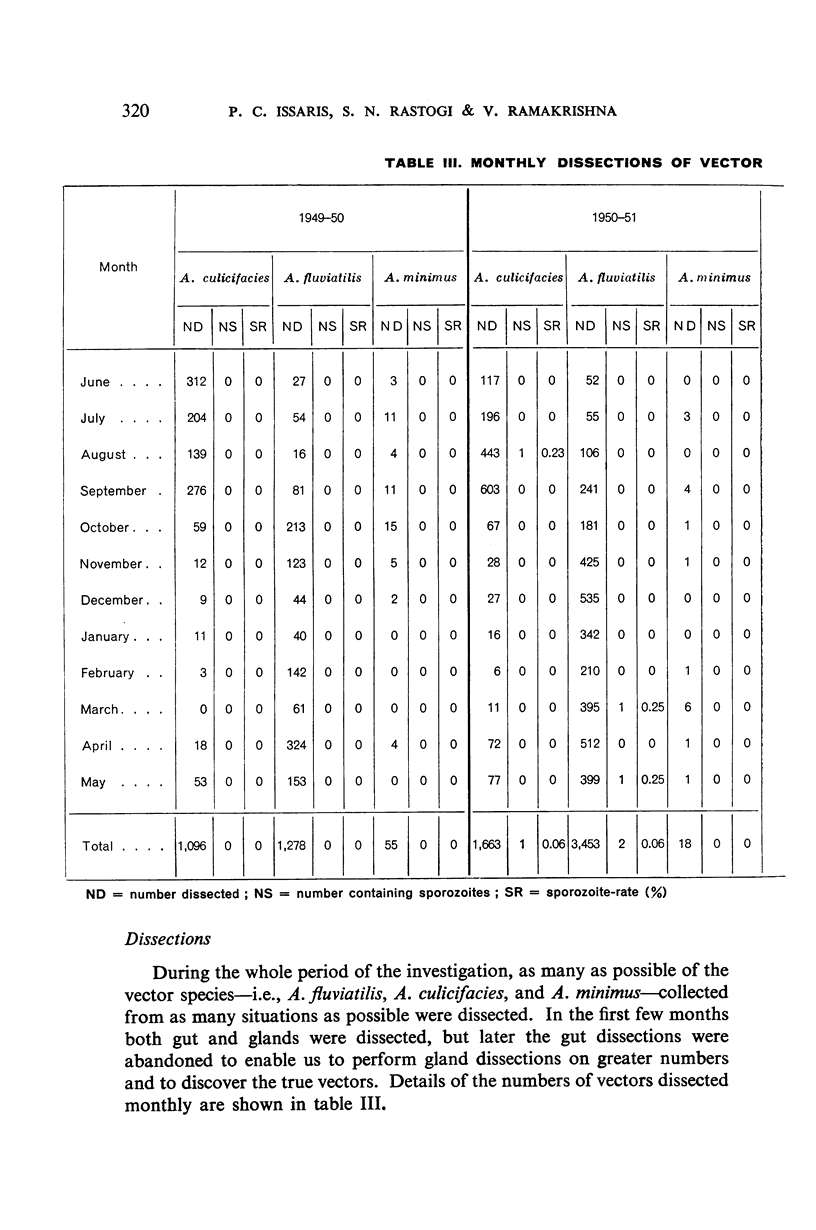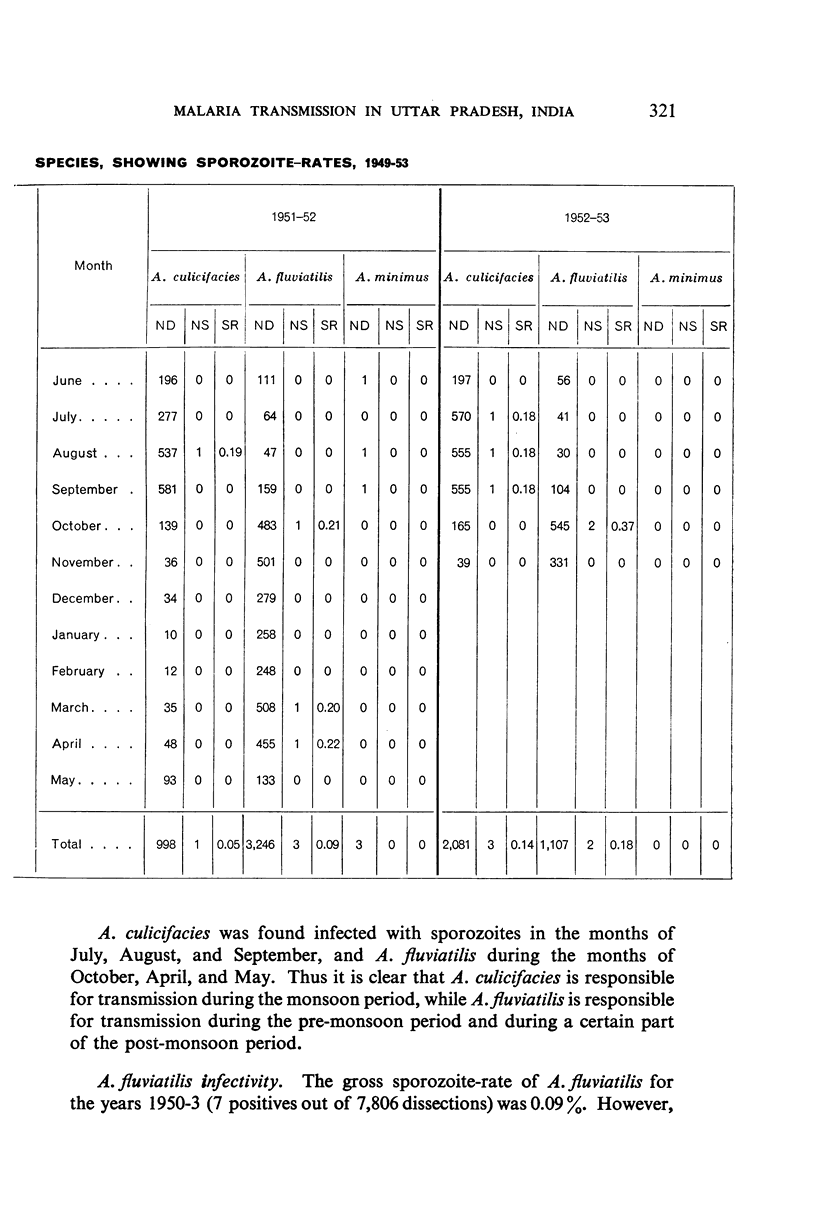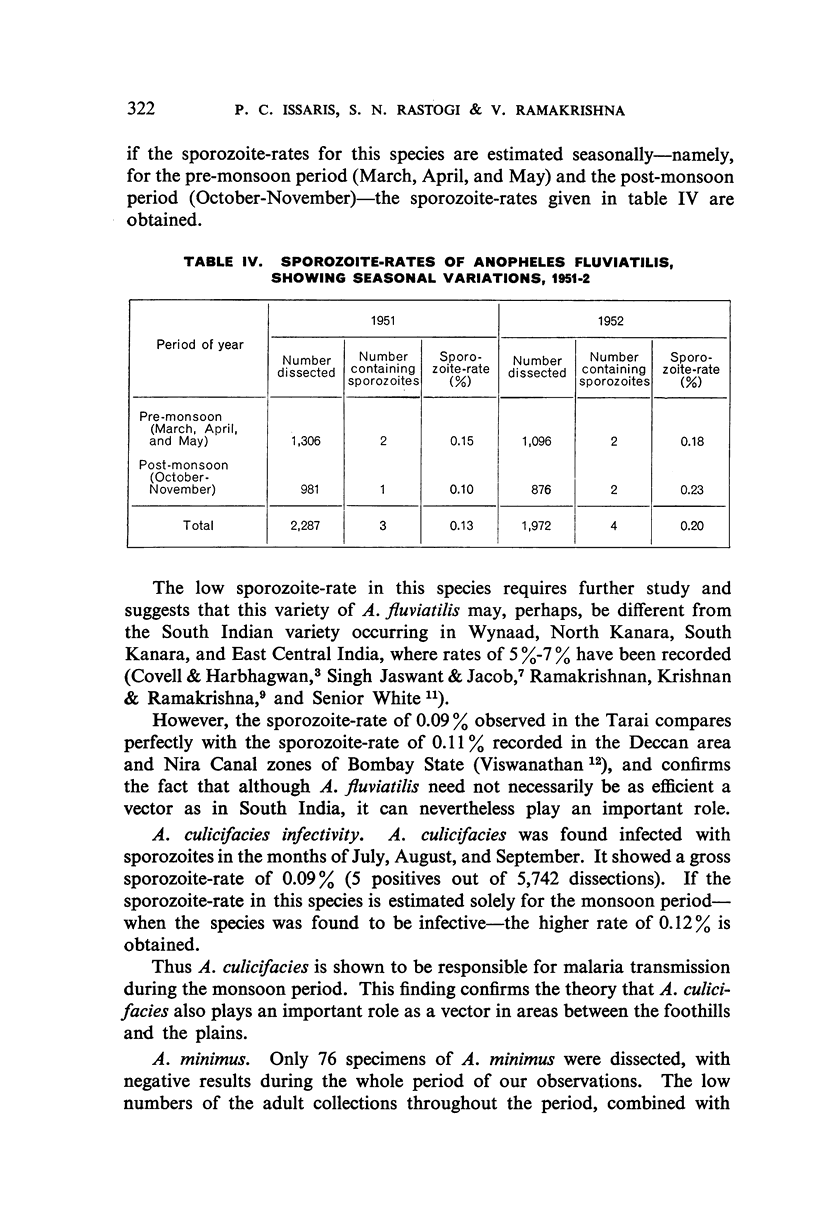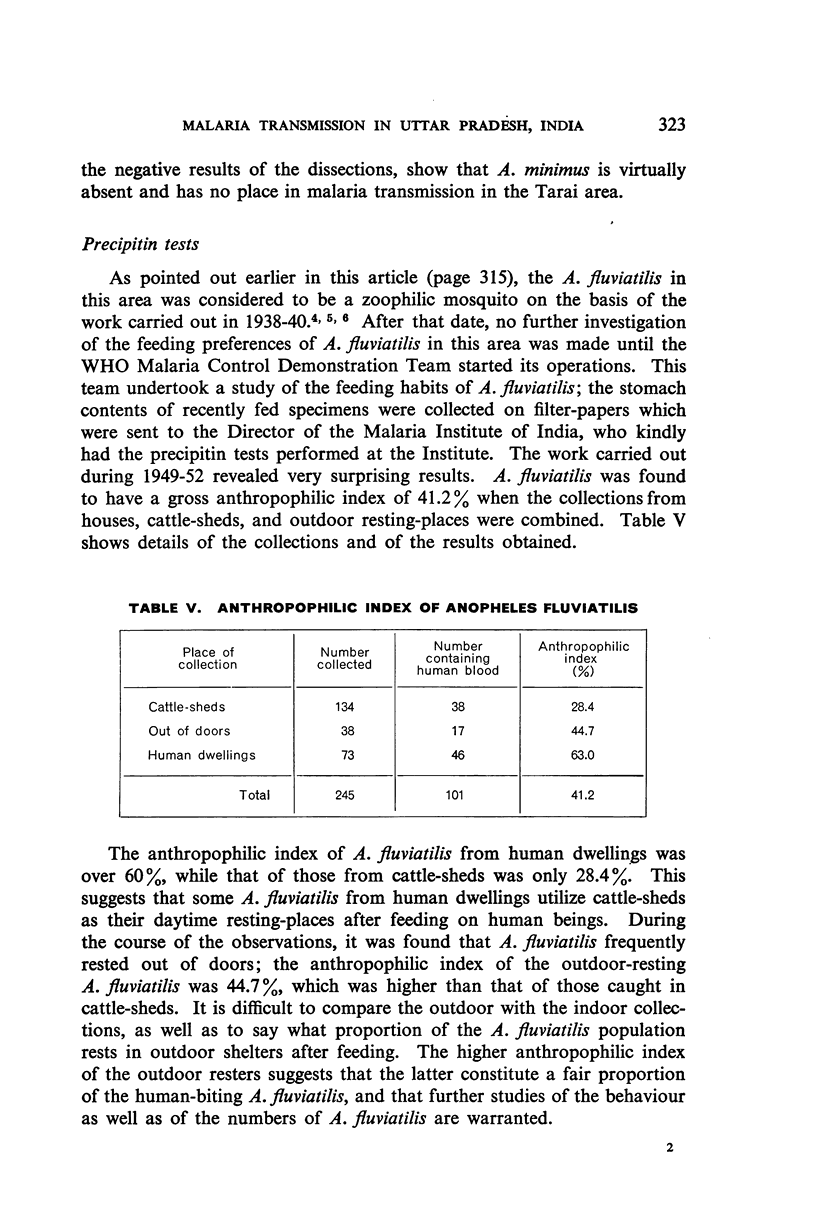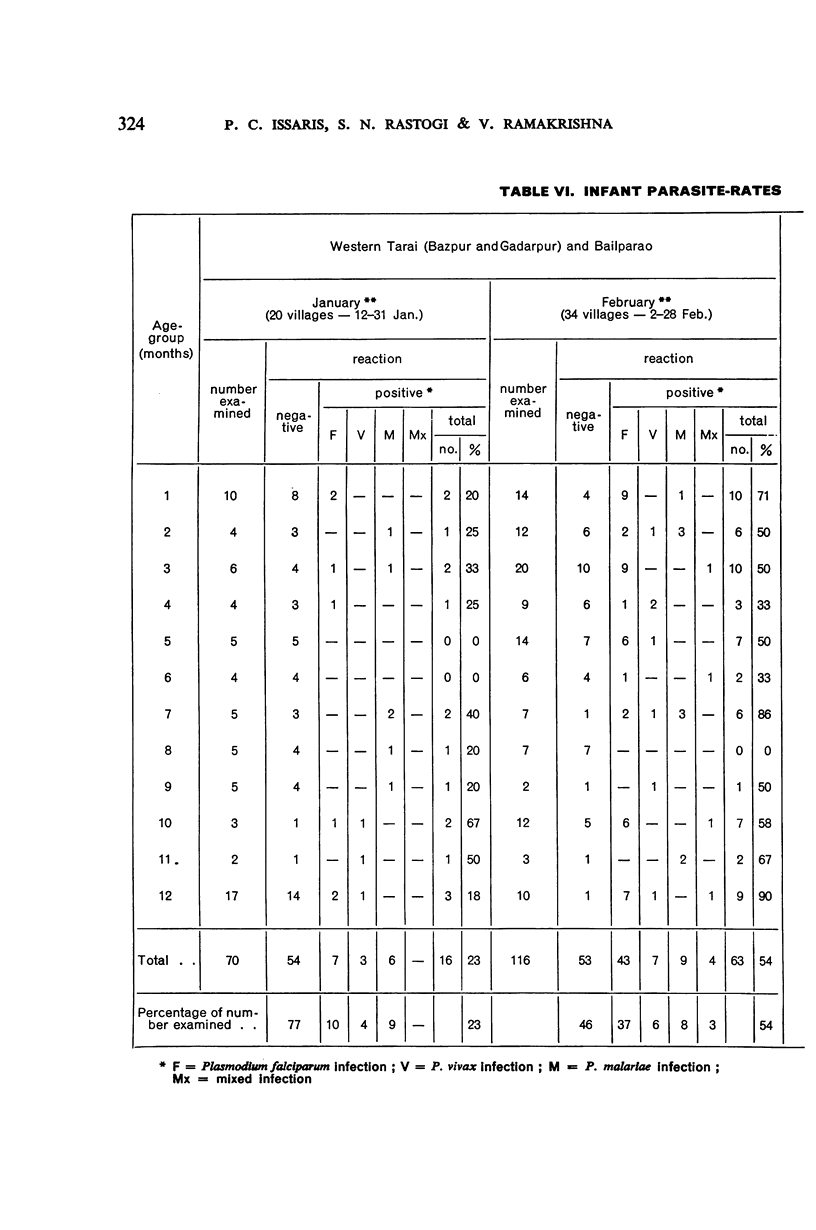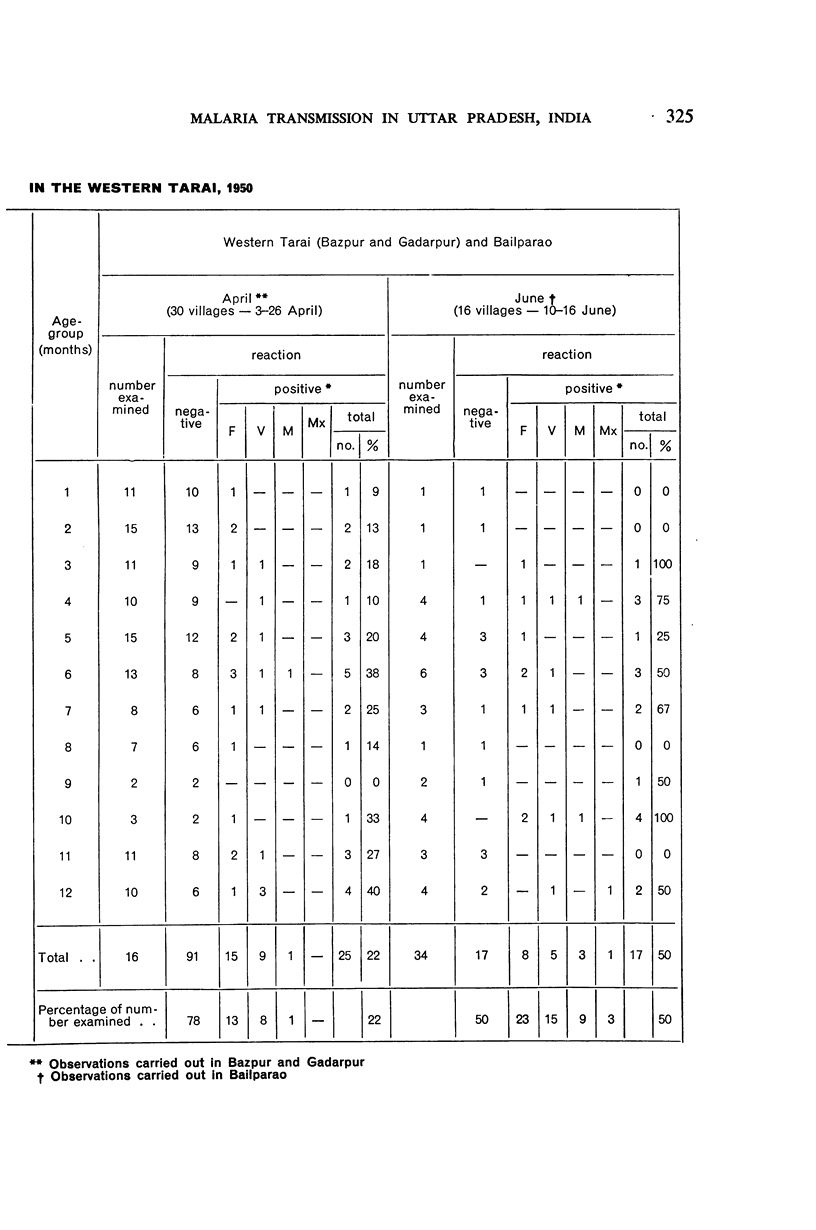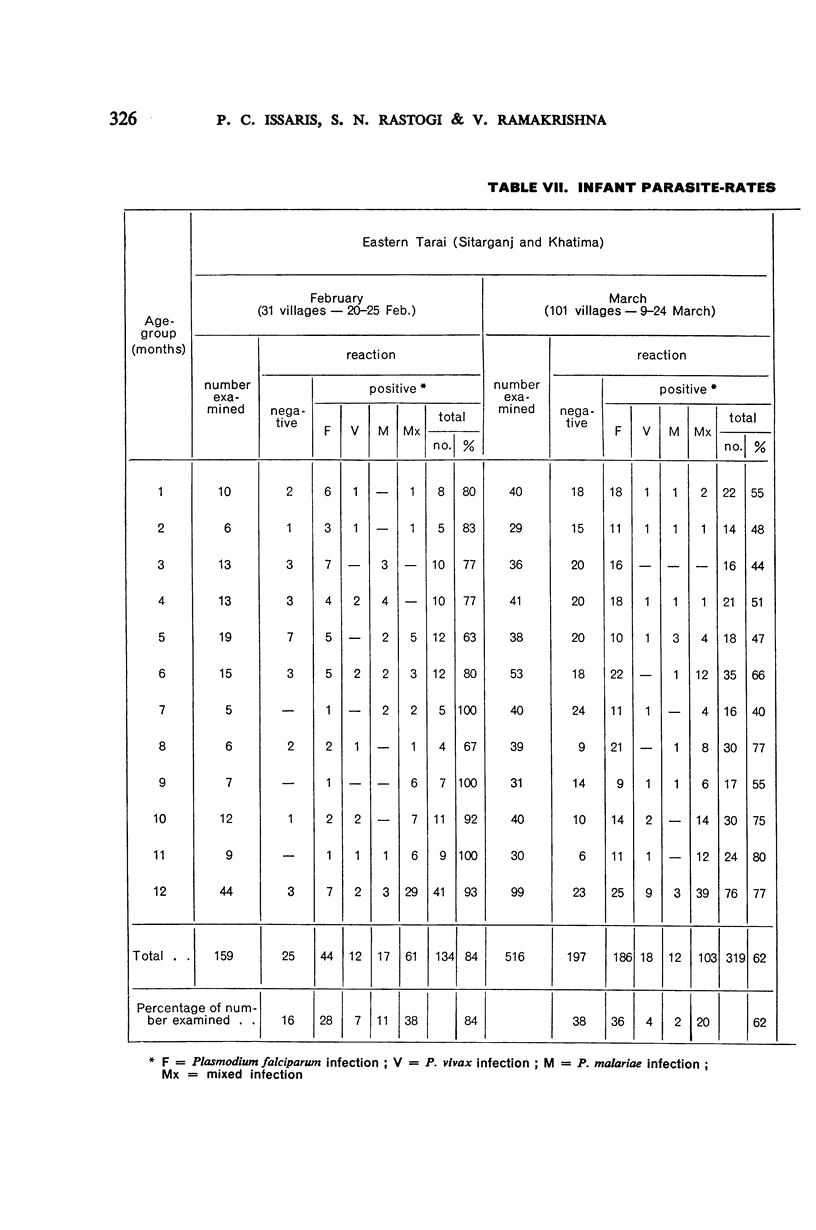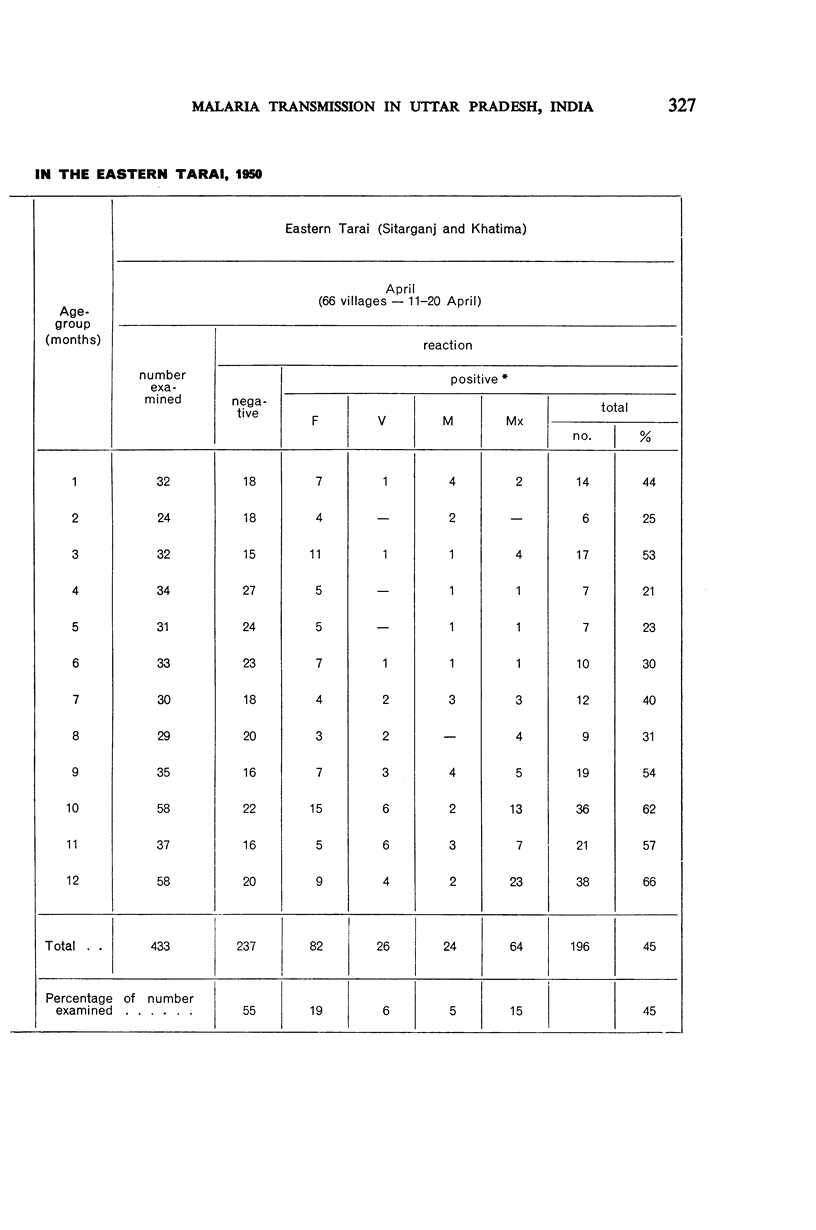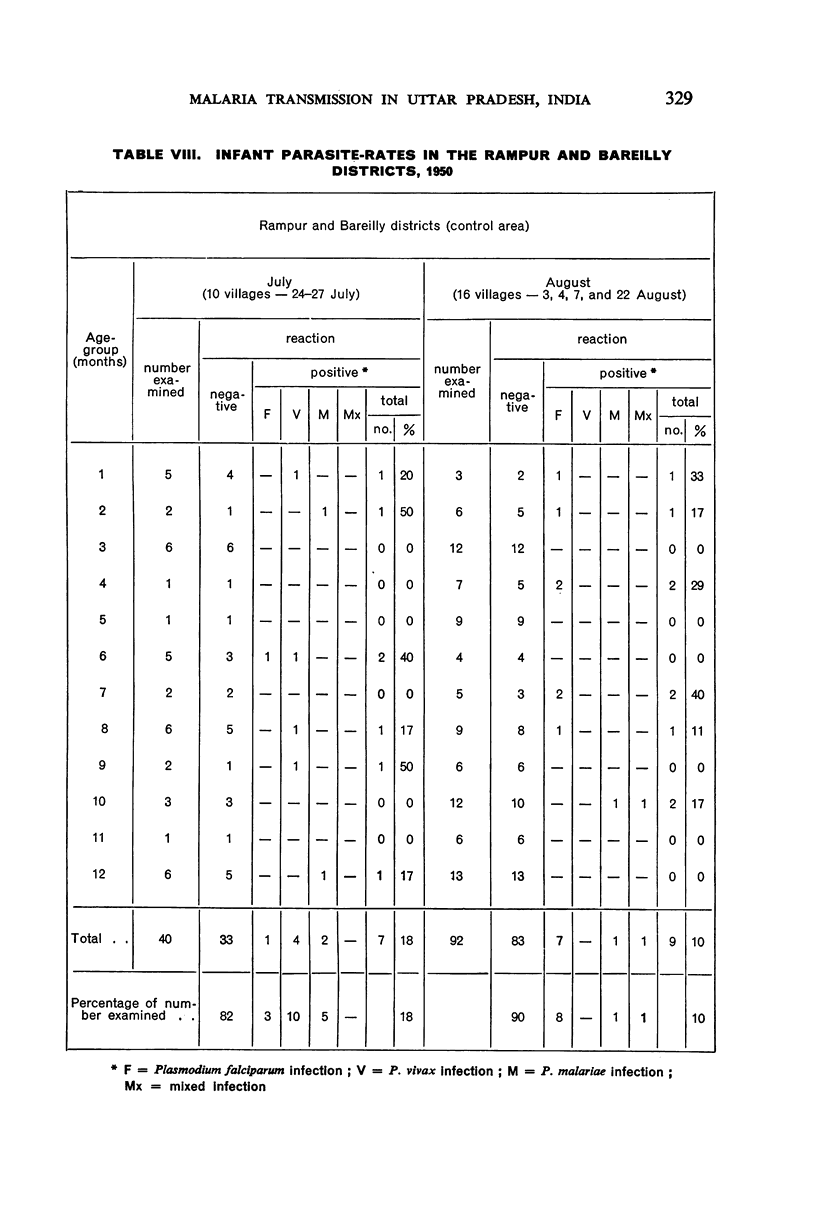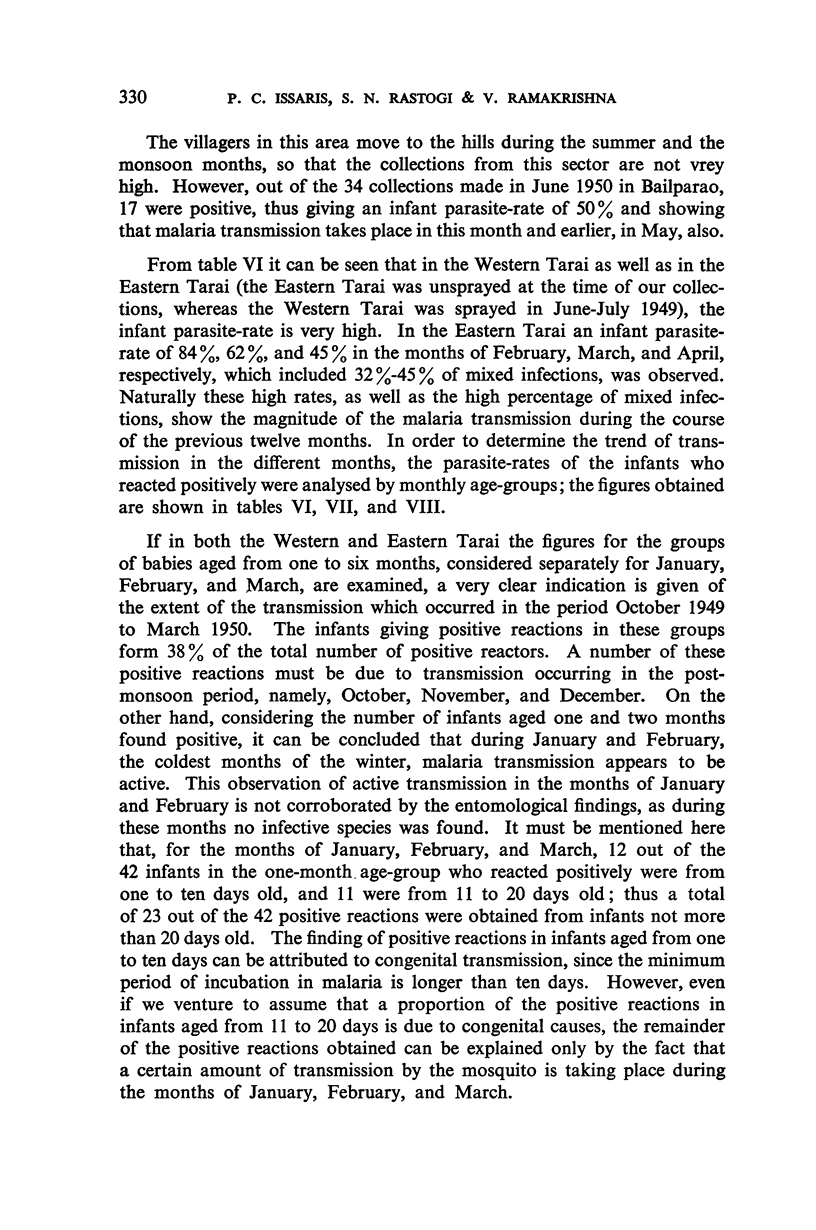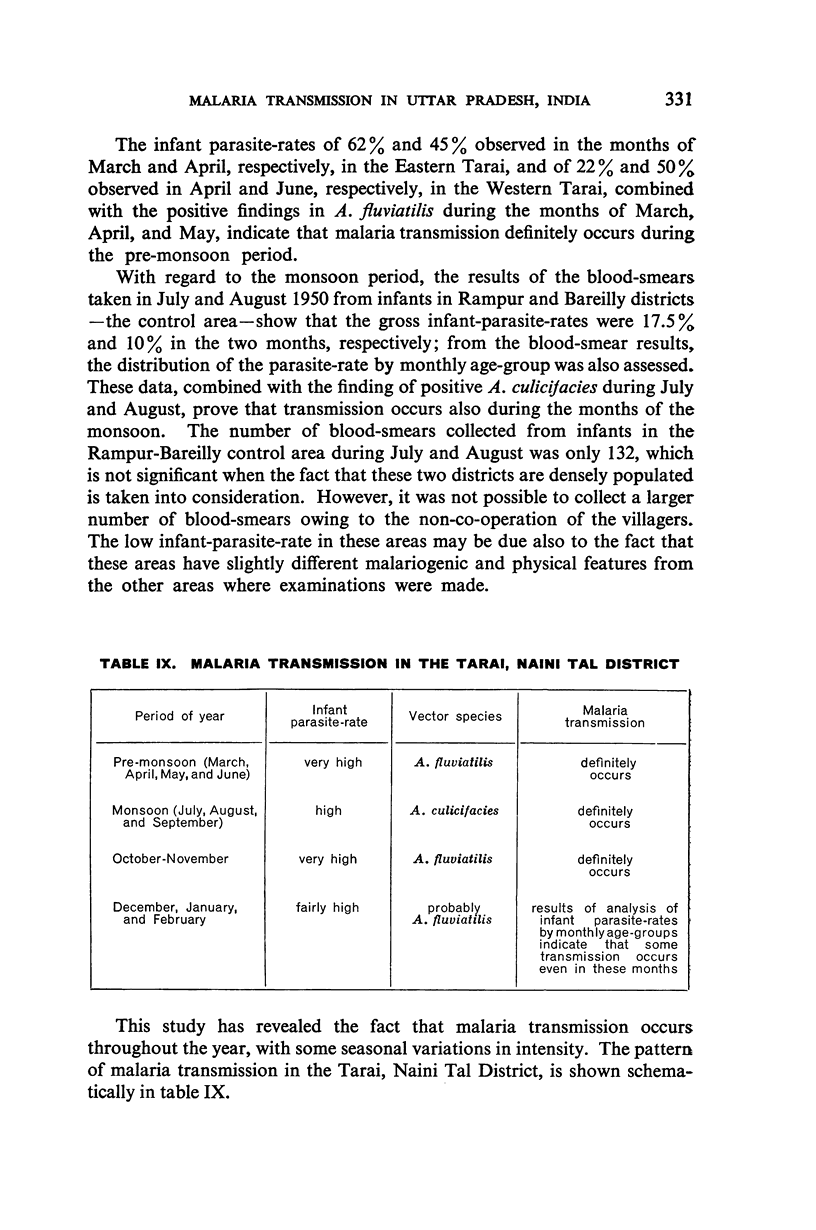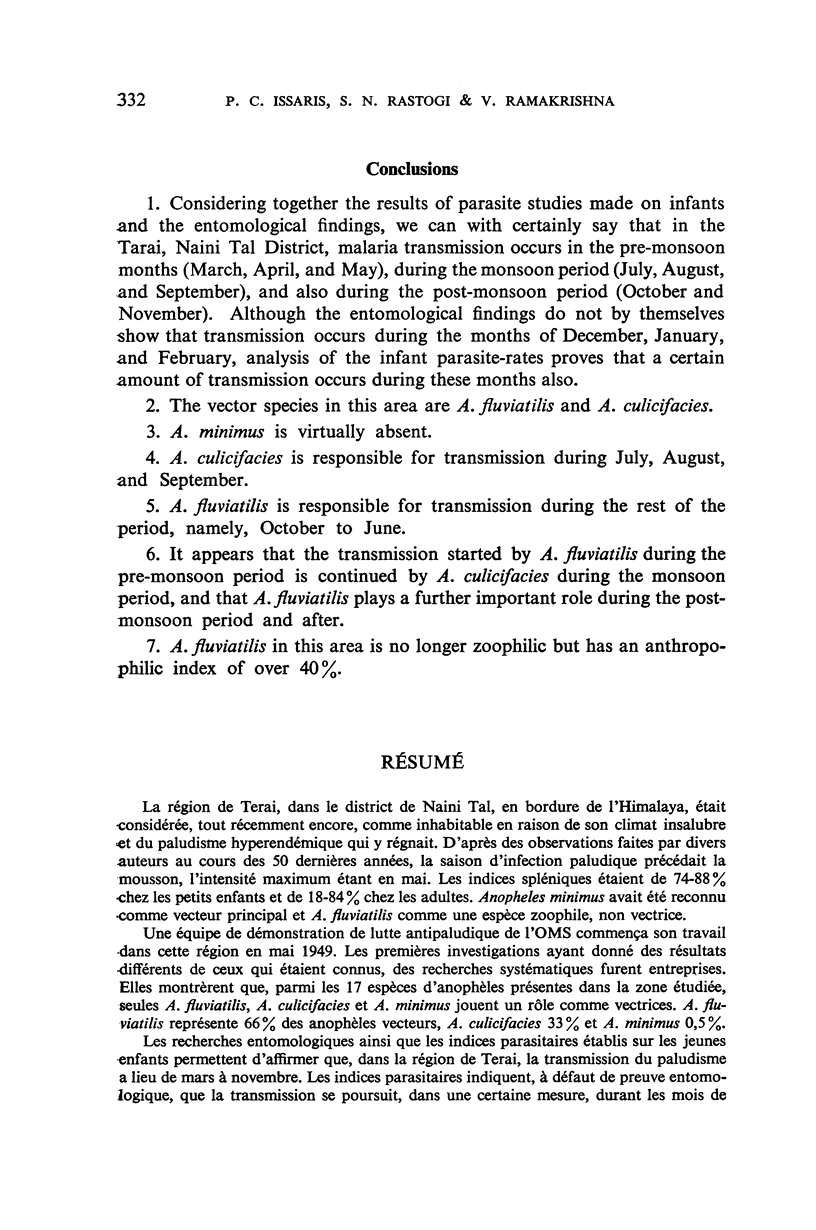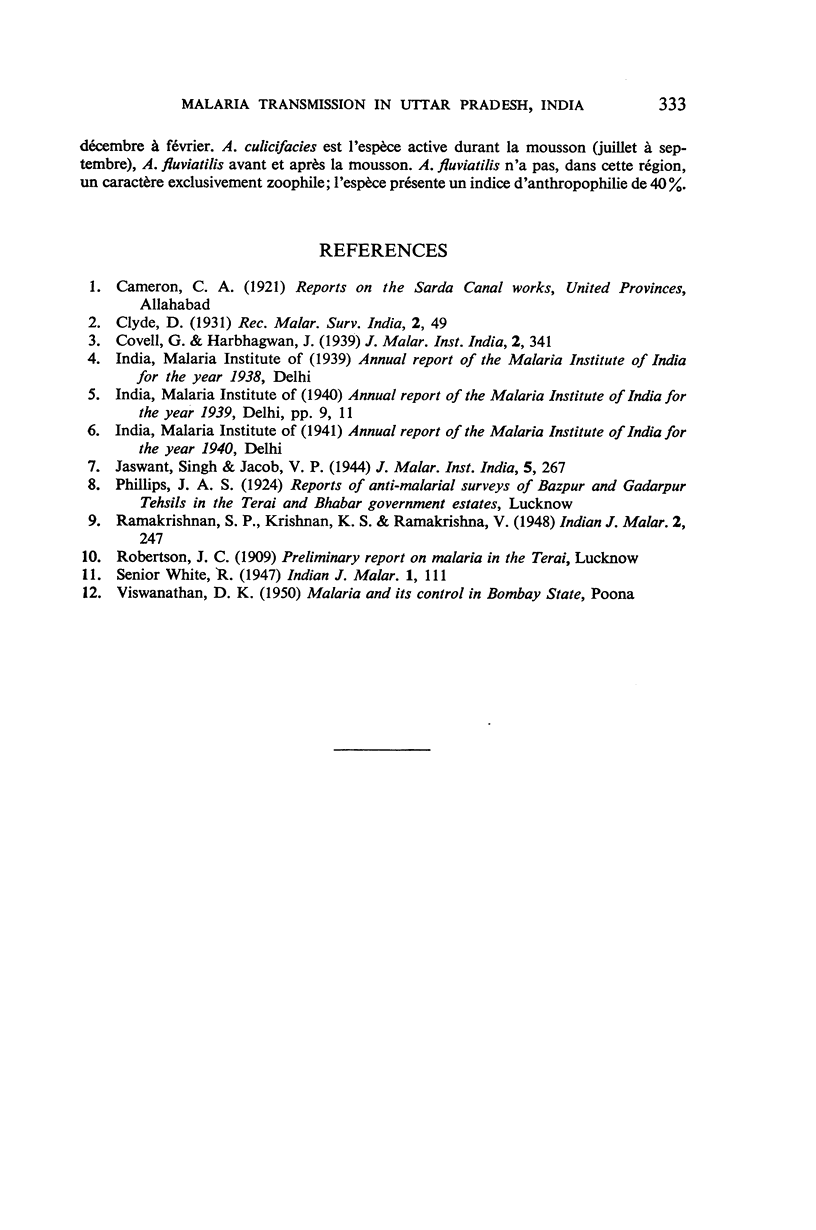Abstract
A study of the problems of malaria transmission in the Tarai of Naini Tal District, Uttar Pradesh, India, has been made by a WHO Malaria Control Demonstration Team operating in the area between 1949 and 1952.
Earlier investigators of malaria transmission in the area had concluded that the fever season coincided with the pre-monsoon period; that Anopheles minimus was the chief vector; and that A. fluviatilis could be dismissed as a zoophilic non-vector.
As a result of the team's malariometric and entomological surveys, the following conclusions have been reached: malaria transmission takes place throughout the year; A. minimus is virtually non-existent and plays no part in transmission; A. fluviatilis, the primary vector, is responsible for transmission in the pre- and post-monsoon periods; A. culicifacies, the secondary vector, is responsible for transmission in the monsoon period (July-September).
The results of precipitin tests on A. fluviatilis—which gave a gross anthropophilic index of over 40%—indicate that the A. fluviatilis found in this region of India is a mixture of both anthropophilic and zoophilic races; further studies are required to substantiate this theory.
Full text
PDF